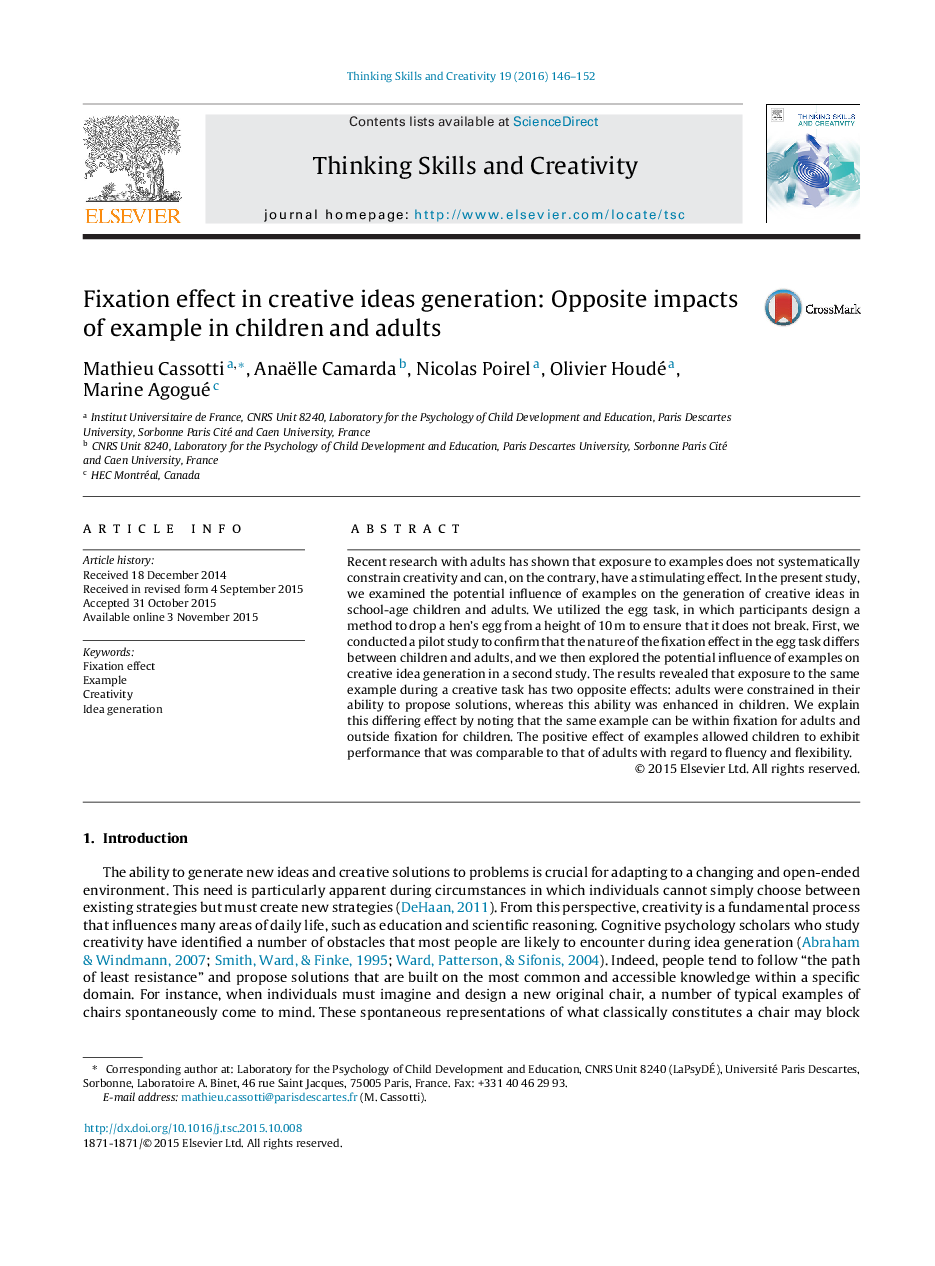| کد مقاله | کد نشریه | سال انتشار | مقاله انگلیسی | نسخه تمام متن |
|---|---|---|---|---|
| 375579 | 622805 | 2016 | 7 صفحه PDF | دانلود رایگان |
• We examined the influence of examples on ideas generation in children and adults.
• The results revealed that exposure to the same example has two opposite effects.
• Adults were constrained in their ability to propose creative solutions.
• In contrast, this ability was enhanced in children.
Recent research with adults has shown that exposure to examples does not systematically constrain creativity and can, on the contrary, have a stimulating effect. In the present study, we examined the potential influence of examples on the generation of creative ideas in school-age children and adults. We utilized the egg task, in which participants design a method to drop a hen’s egg from a height of 10 m to ensure that it does not break. First, we conducted a pilot study to confirm that the nature of the fixation effect in the egg task differs between children and adults, and we then explored the potential influence of examples on creative idea generation in a second study. The results revealed that exposure to the same example during a creative task has two opposite effects: adults were constrained in their ability to propose solutions, whereas this ability was enhanced in children. We explain this differing effect by noting that the same example can be within fixation for adults and outside fixation for children. The positive effect of examples allowed children to exhibit performance that was comparable to that of adults with regard to fluency and flexibility.
Journal: Thinking Skills and Creativity - Volume 19, March 2016, Pages 146–152
